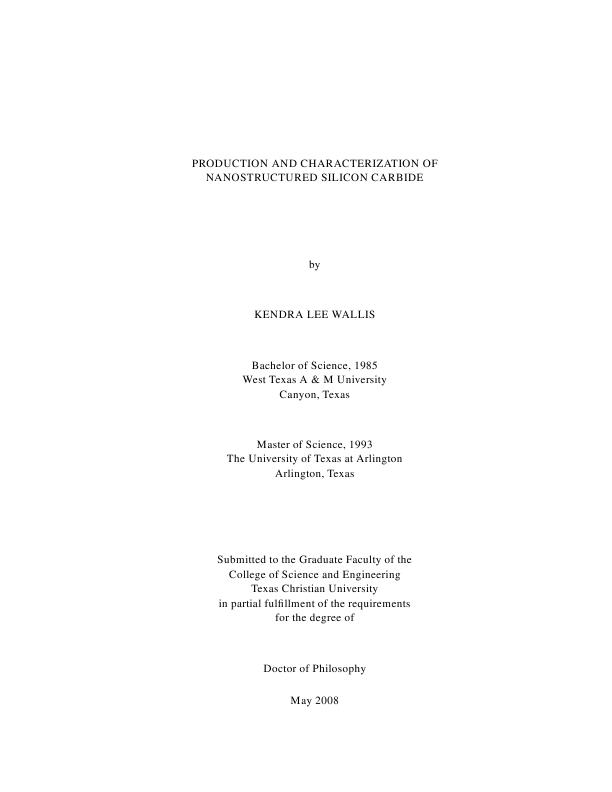Production and characterization of nanostructured silicon carbideShow full item record
| Title | Production and characterization of nanostructured silicon carbide |
|---|---|
| Author | Wallis, Kendra Lee |
| Date | 2008 |
| Genre | Dissertation |
| Degree | Doctor of Philosophy |
| Abstract | Nanostructured materials continue to attract attention because of their new and interesting properties, which are very different from their macrostructured equivalents. Since the size of grain and surface differs, a better understanding of the microstructure, the mechanism of formation, and methods of controlling surface properties is necessary. In this study, nanostructured silicon carbide has been produced from the solid-solid reaction of a mixture of silicon nanopowder and carbon multiwalled nanotubes (MWNT) sintered by induction. A study of the reaction rate at different temperatures has yielded a value for the activation energy of 254 ? 36 kJ/mol, and has led to the conclusion that the reaction is diffusion-controlled.^A second method produced pure silicon carbide nanowires using a procedure which kept the solid reactants, silicon powder and MWNT, separated while sintering at a constant temperature of 1200? C.^Silicon in the vapor-phase reacted at the surface of the MWNTs followed by diffusion of both precursors through the product phase boundary. The reaction time was varied, and a morphological study has been done describing changes in shape and size as a function of time. The initial reaction produced a layer of SiC providing the outer shell of coaxial structures with carbon nanotubes inside. As Si and C diffused through the product phase to react at the interface, the tube became filled with SiC to form solid SiC nanowires, and the outer diameter of the nanowires grew continuously as reaction time increased. After long sintering times, growth continued in two dimensions, fusing nanowires together into planar structures.^In addition, the precursor form of carbon was varied, and nanowires produced by two different types of nanotubes have been studied. The produced SiC nanowires show cubic crystal structure.^After a few hours of sintering, stacking faults began to occur inside the wires, and the frequency of occurrence of the stacking faults increased as reaction time increased. Long sintering times from 26 to 64 hours produced enough stacking faults to manifest as a 2H peak in x-ray diffractograms. HRTEM and HRSEM showed evidence of an amorphous phase at the surface about 2 to 3 nm thick. |
| Link | https://repository.tcu.edu/handle/116099117/4110 |
| Department | Physics and Astronomy |
| Advisor | Zerda, T. Waldek |
Files in this item
This item appears in the following Collection(s)
- Doctoral Dissertations [1518]
© TCU Library 2015 | Contact Special Collections |
HTML Sitemap



